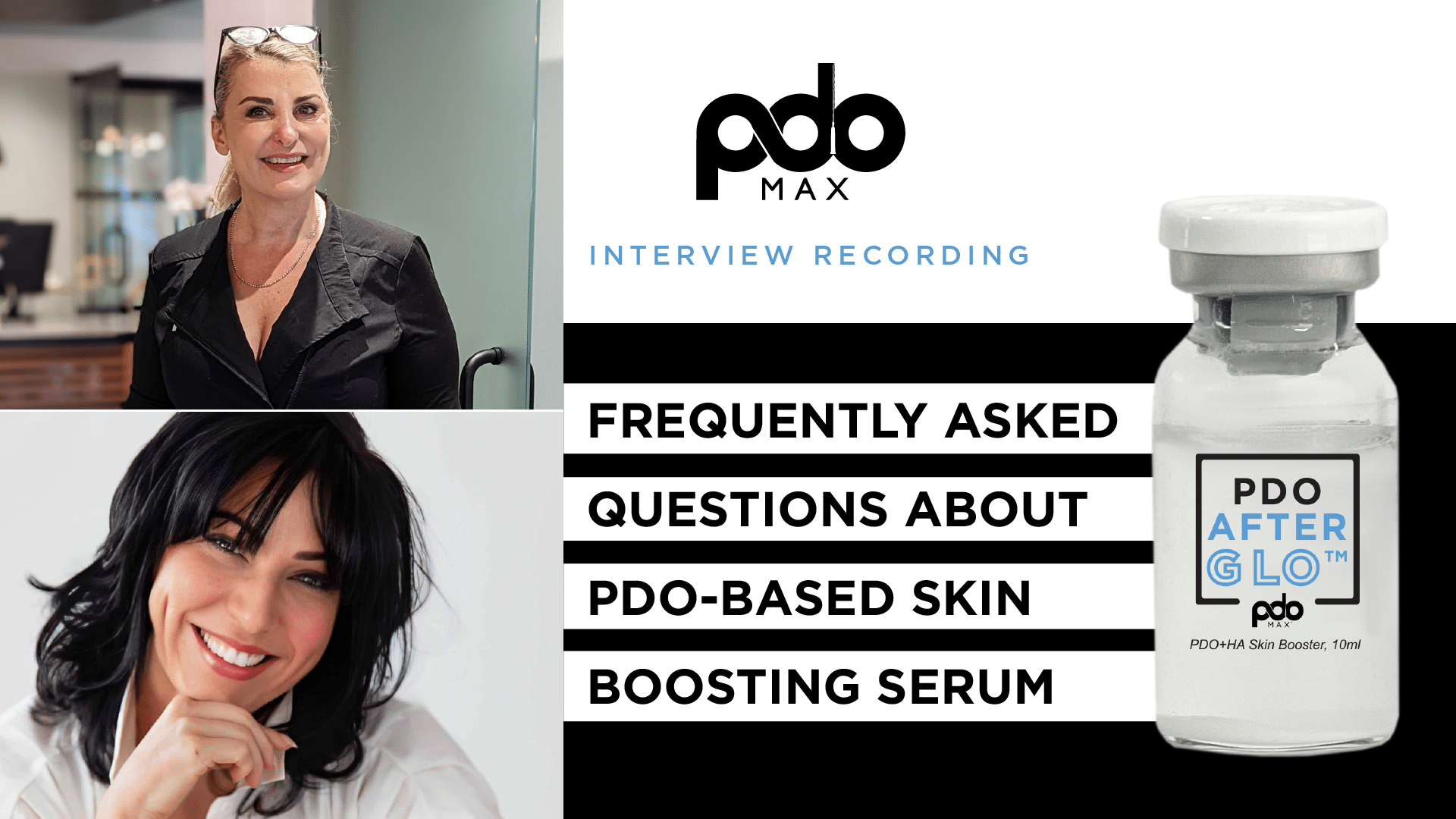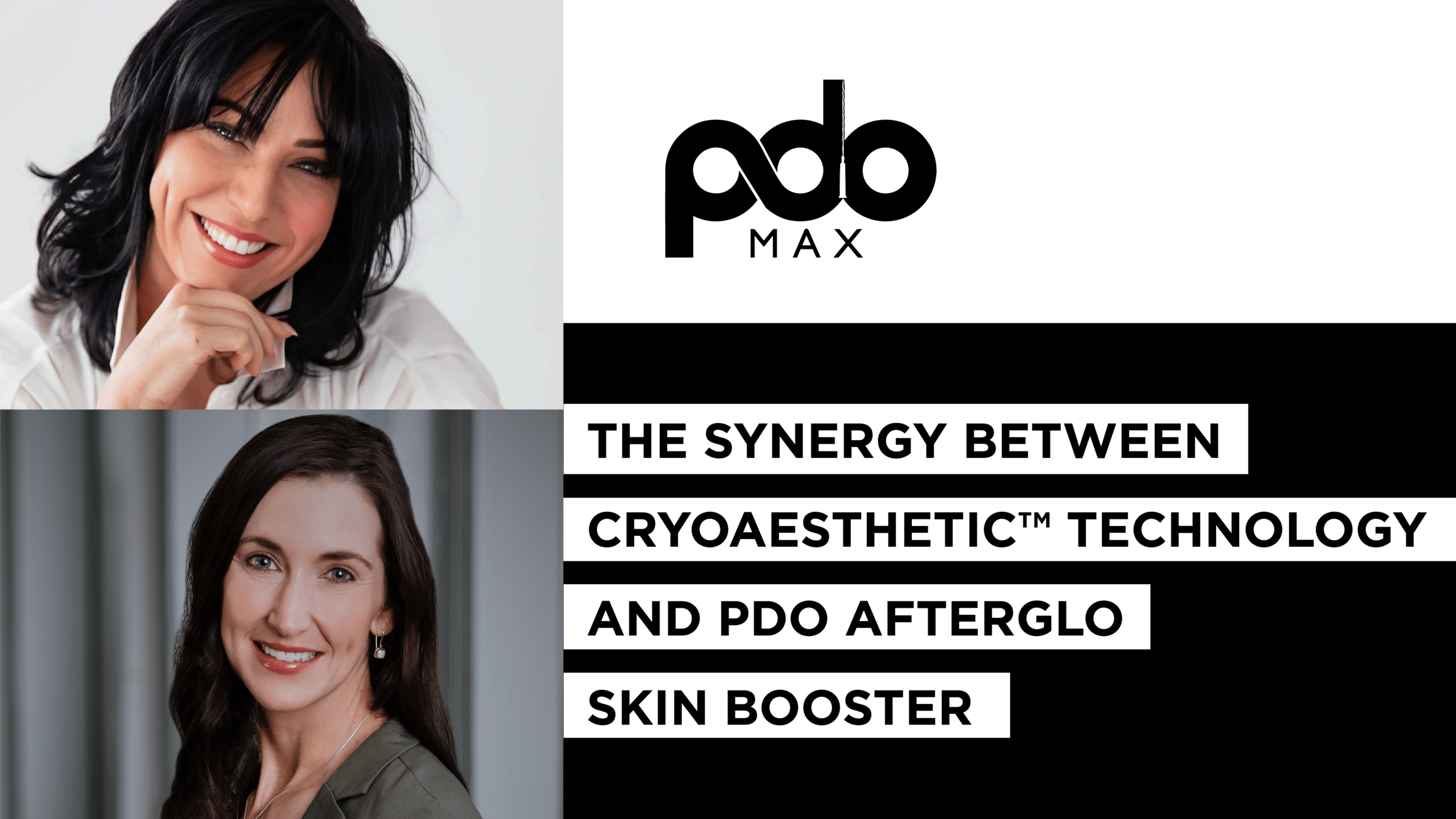PDO Max Founder Giovanna McCarthy answers frequently asked questions about PDO-based skin boosting serum. She…
PDO Threads (Client Version)
Download Blog Assets
There’s a new beauty craze among celebrities: thread lifts. This non-invasive cosmetic procedure gives you those coveted cat eyes and high-arched brows, which can explain the Sphinx-like beauty of many Instagram personalities.
One Hollywood superstar that sung praises about this trend is Gwyneth Paltrow. In her Netflix series “The Goop Lab,” the actress openly endorsed thread lifts. She says that they’re a more natural solution to aging compared to facelifts, because the threads eventually dissolve and boost your body’s collagen.
Joining the list of celebrities who’ve had thread lifts is Eva Mendez. She shared her experience through her Instagram, although the post has since been deleted.
Other A-listers who are rumored to have gotten thread lifts are Kim Kardashian, Kylie Jenner, and Bella Hadid.
So, what exactly are thread lifts?
How Do Thread Lifts Work?
A thread lift is a non-surgical brow lift that uses PDO (polydioxanone) threads to pull up the skin. The threads have microscopic barbs that anchor into your skin and tack it in place. The doctor injects the threads in your temple and eyebrow area to give you a pulled-back look, hence the term “cat eye thread lift.”
PDO threads are dissolvable. This means the effects don’t last as long as other more invasive procedures, which can be a bummer for some who are interested in more long-lasting effects. But the good news is that as your body absorbs the threads, it stimulates collagen production around the affected area. The collagen boost maintains the effect of your thread lift over time. Although, you do need to have the procedure several times before your collagen makes a noticeable response.
A small study from 2017 supports the long-term effects of PDO face thread lifting. It showed that the lifting and tightening effects of the procedure decreased after a year. However, the “rejuvenation” effect increased with the number of thread-lift operations done.
Different Kinds of PDO Thread Lifts
PDO threads generally come in three kinds, each with their own ideal placements.
1. Mono or Smooth Thread
Mono threads come in a single PDO filament. They are smooth, with no barbs, so they’re injected in a mesh-like pattern for maximum hold. The benefits of mono threads include skin tightening and rejuvenation for facial wrinkles, forehead lines, and a sagging neck.
2. Cog or Barbed Thread
Cog threads look like mono threads but with miniscule barbs. The barbs enhance the skin’s structure, which is why cog threads are mostly intended for lifting. This kind of PDO thread promotes collagen production on the injected area.
Patients often get cog threads to lift their nose, eyebrows or jowls. Cog threads can also be used with mono threads to combine rejuvenation and tightening.
3. Screw or Twisted Thread
Screw threads are one or two PDO filaments intertwined around the needle, designed to give the face more volume. They’re great for plumping sunken eyes and making the cheekbones more prominent.
Screw threads are also popular among people who want a V-shape face without going under the knife. The doctor will inject the threads in strategic areas of your face to give more volume to your jawbone and chin.
Are Thread Lifts Safe?
Thread lifts have low risks since the procedure is non-invasive. The American Society of Plastic Surgeons confirms that there’s virtually no risk of severe bruising, scarring, bleeding, and other complications. At most, you’ll experience some pain, itchiness and redness on the injection site, but they should fade after a few hours.
In rare cases, some patients might experience severe irritation or infection. If either happens, the practitioner will promptly remove the sutures and the patient’s skin will go back to normal.
However, if you do get too many thread lift procedures in a short period, the risk of scarring will increase. The temple and eyebrow area is too small to hold multiple threads at once, which can result in scar tissues.
Before your appointment, the practitioner will give you a list of food, medications, and activities to avoid prior to your procedure. Make sure to follow these strictly because they’ll reduce the risk and potential side-effects of the thread lift injections.




